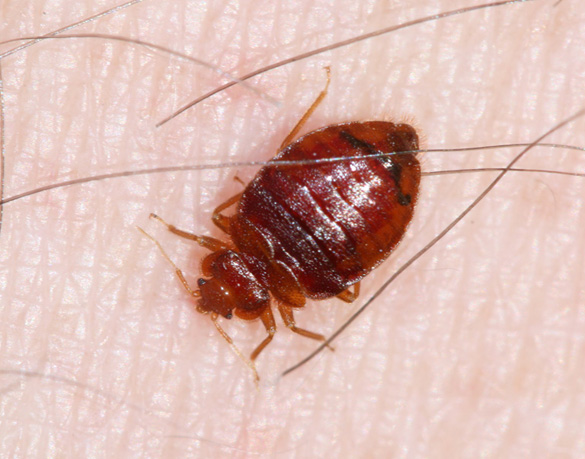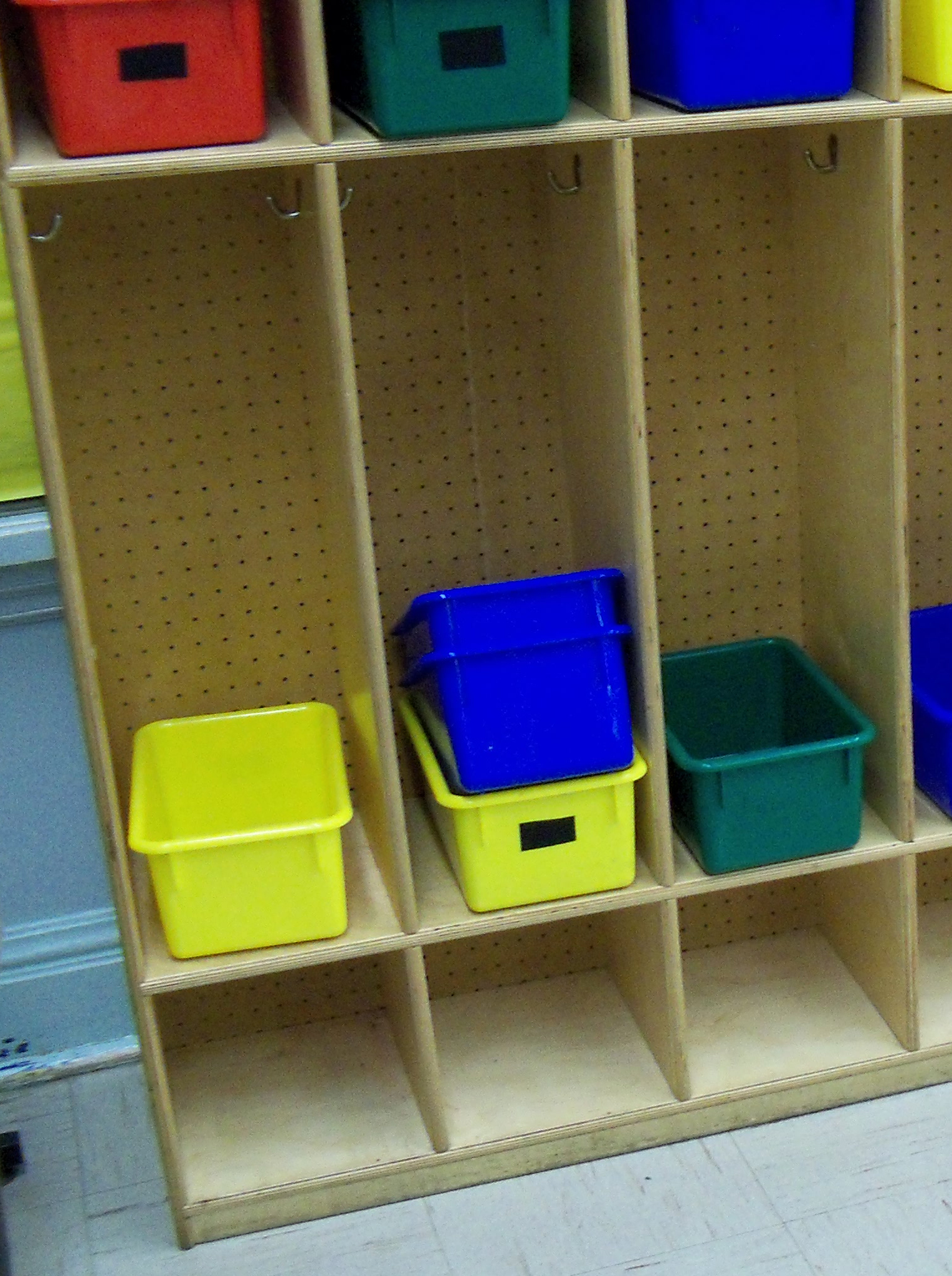
Introductions of bed bugs into school classrooms are increasingly common; however true infestations are rare.
As bed bugs become more common throughout the U.S., all school systems must decide how to deal with bed bugs coming in with students and staff. The following list of guidelines has been developed to address concerns related to bed bugs being observed on district staff, students, or properties. This list is intended simply as a model for review by districts wishing to develop their own protocols and policies.
- All school nurses and pest management staff should receive yearly training in how to identify bed bugs, basic bed bug biology, and the protocols outlined here.
- As soon as a campus receives a creditable report that bed bugs are found on a student or a student’s belongings, the school nurse should notify the district’s pest control or IPM office, and verify that an actual classroom introduction or infestation has occurred. Appropriate campus team members should be notified as necessary.
-

Any sealed plastic tote or tub, especially if it has smooth vertical walls, will help keep bed bugs from crawling from one student’s belongings to another. These unsealed plastic tubs will slow bed bug dispersal, but a lidded tub is preferable.
If it is determined that there is an ongoing risk of a student bringing bed bugs to school, the affected student(s) should deposit backpack or coat in a safe place when arriving at school. A safe place might include the nurse’s office or in a bed bug-tight container in a locker or classroom. Lidded plastic tubs (e.g., Rubbermaid® or Tupperware® type containers) with smooth vertical sides, or plastic garbage bags secured with a tie are effective at retaining bed bugs. Such containers should be available in the nurse’s office or other secure site for use by teachers as needed. If necessary to avoid stigmatizing one or a few children, tubs and/or plastic bags may be made available to all students in the affected classroom.
- The child should be provided with a note to parent(s) alerting them that bed bugs have been found on the child’s clothing or belongings. The notice should include literature on bed bugs and their control, along with an offer for the parents to visit with nurse or school IPM staff over the phone to discuss the pest problem. In most housing situations it is the responsibility of the homeowner to take care of bed bug problems, although some apartment complexes may assist residents with discounted or free bed bug treatments. There are currently no city, state or federal government programs offering free or discounted bed bug treatments. Texas A&M AgriLife Extension Service offers extensive information on bed bug management at http://citybugs.tamu.edu/factsheets/biting-stinging/bed-bugs/
- The school nurse in concert with campus administration should decide on an appropriate action to address student hygiene and the risk of bed bugs being transported from home. Options include:
- Doing nothing beyond isolating student belongings if there is no further evidence of bed bugs on the child’s person, or other signs of poor hygiene at home or school.
- When children come to school with infested clothing, providing fresh, bed-bug-free clothing for the student, sealing the infested clothing in a plastic bag for temporary storage, or heating clothes in a drier on high temperature setting for at least 20 minutes. Note: bed bugs do not normally live in clothing, but they may crawl on clothes left on the floor or bed overnight in an infested home. Children should be taught at home to keep backpacks and clothes away from beds and sofas where bed bugs are most likely to hide.
- Contacting Child Protective Services if there is evidence of willful neglect or abuse. Failure to maintain a safe, pest-free home environment can be a symptom of abuse.
- Classrooms are generally poor environments for bed bug survival and reproduction. Therefore true bed bug infestations (with self-sustaining populations of bed bugs) in classrooms nationwide are rare or non-existent. Given that bed bugs are increasingly common in student homes, periodic introductions of bed bugs to school classrooms is highly likely. For this reason, the district’s Integrated Pest Management Coordinator will inspect any classrooms or offices likely to have experienced a bed bug introduction. Inspections will search for live bed bugs or any physical evidence linked to the presence of bed bugs. To do this, the IPM Coordinator and/or the district’s pest control contractor will normally conduct a flashlight inspection and place monitoring traps in areas suspected of harboring bed bugs. Components of inspections may include:

A CO2 baited bed bug trap suitable for use in the classroom. A thermos or insulated container is filled with dry ice and placed on top of a Climbup Bed Bug Interceptor. Addition of CO2 increases trap catch significantly. Traps should not be left out when students are present.
- Flashlight inspection for live insects, cast skins, bed bug droppings or eggs near crevices and other hiding places. Special emphasis will be given to coat or backpack storage areas or lockers and areas around the desk of the infested student. Inspections will be conducted after school hours to avoid alarming students or teachers, or stigmatizing affected student(s).
- Monitoring stations with and without attractants such as CO2 or other lures will be used. Pitfall traps designed for monitoring bed bugs are generally more effective at detecting bugs compared to visual inspections, especially when bed bug numbers are low. When practical, a trap such as the ClimbUp® Interceptor or BlackOut™ Bed Bug Interceptor will be used in combination with a slow-release source of CO2. Such monitors are most effective when deployed over weekends or holidays, but may also be used overnight if retrieved before students arrive the next morning. One to three such traps should be deployed per affected classroom (when using unbaited traps, more may be needed). Note that unbaited ClimbUp® Interceptors or BlackOut™ Bed Bug Interceptor traps can also be used, although the ability to detect bed bugs will be reduced without a CO2 source. An alternative is for traps without CO2 to be used during the week, and CO2 sources added over weekends or holidays. Such traps not only monitor for bed bugs, but they may also help rid classrooms of low levels of bed bugs.
- Should bed bugs be found in a classroom, the following steps should be taken:
- The affected rooms and appropriate furniture should be thoroughly vacuumed (Important: vacuum bags be discarded in outdoor dumpsters after use)*. District pest management staff or the district pest management contractor may need to be available to advise and direct cleaning efforts. Should bedding, couches or upholstered furniture be in an area of a suspected infestation, or be found to have signs of bed bugs, the furniture will either be removed from the facility for treatment or disposal, or else steam-treated in place by a trained professional.
- In most cases, vacuuming and seven nights of monitoring should be the only treatment necessary. However, should points of infestation be detected, silica aerogel dust (e.g., Tri-Die®, CimeXa™) may be applied to cracks or voids where bed bugs hide. A light dusting of silica aerogel (applied with duster or soft-bristled brush) may also be applied to baseboards, the insides of lockers or around coat racks. Such applications should be barely detectable to a casual inspector, and should not leave obvious dust deposits. Note that pyrethroid insecticide dusts (e.g., Tempo® D, DeltaDust®) should not be used in classrooms or any exposed areas where children or staff may contact them.
- Other insecticide sprays or fumigant gases should not normally be used on school district property for bed bug control.
- If there is no evidence of bed bug presence after seven days, targeted IPM procedures may be stopped and monitors may be removed.
- A process for determining whether, when and how to contact school parents in case of bed bug introductions to a school will be discussed, and coordinated with the school district public relations staff.
* A lint roller (extra sticky) may also be useful for removing bed bugs and bed bug eggs, especially from upholstered classroom or office furniture.
